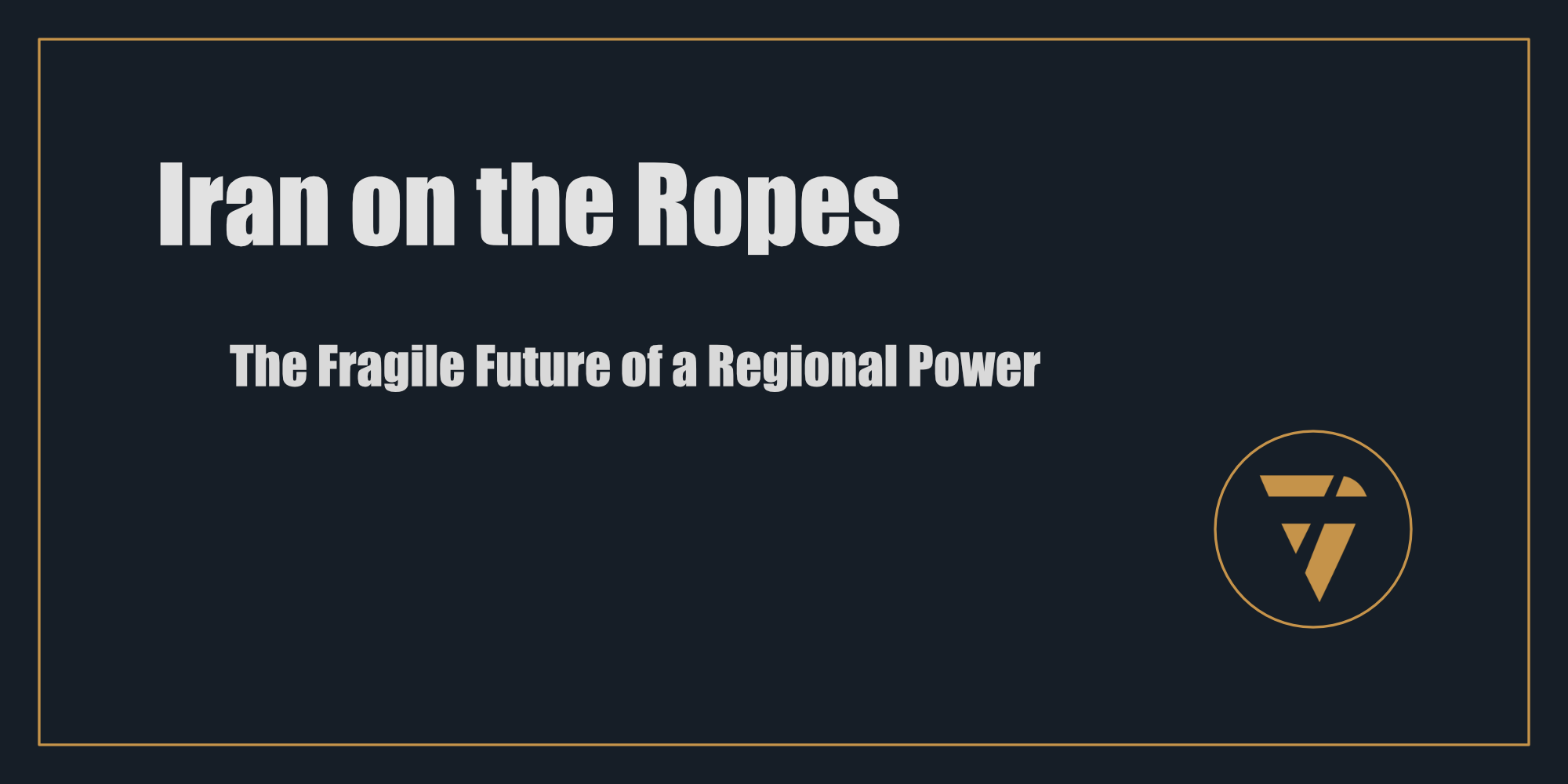Iran on the Ropes
The Fragile Future of a Regional Power

What happens when a nation teeters on the edge of collapse yet refuses to fold? Iran on the Ropes is not the end of a story—it’s the beginning of a volatile chapter that could reshape the Middle East and beyond.
A Nation Under Siege
Iran has long been a paradox: a country with immense regional influence yet crippled by internal struggles and external pressure. As outlined in Top Risks 2025, Iran is now "on the ropes," facing a confluence of crises—economic collapse, intensifying domestic dissent, and relentless international isolation.
But don’t mistake fragility for weakness. When cornered, nations like Iran don’t surrender; they adapt, recalibrate, and lash out. For the global community, this means greater instability, more proxy conflicts, and the heightened risk of unintended escalation.
The Pressures Squeezing Iran
Iran’s current predicament stems from three interconnected pressures:
- Economic Collapse:
Decades of sanctions have strangled Iran’s economy, leaving it dependent on a shrinking oil market and struggling with inflation, unemployment, and currency devaluation. The situation is unsustainable, and ordinary citizens bear the brunt of the suffering. - Domestic Unrest:
Protests sparked by economic despair and demands for greater rights—particularly from women and ethnic minorities—are eroding the regime’s legitimacy. The state’s brutal crackdowns have only fueled dissent, creating a cycle of repression and resistance. - Geopolitical Isolation:
Iran’s partnerships with nations like Russia and China have failed to offset its alienation from global markets and institutions. Its nuclear ambitions and proxy interventions have made meaningful diplomacy almost impossible.
These forces are driving Iran to act with increasing desperation, both at home and abroad.
The Regional and Global Fallout
Iran’s instability doesn’t exist in a vacuum—it reverberates across the Middle East and beyond.
- Escalating Proxy Conflicts:
From Yemen to Lebanon to Iraq, Iran’s support for militias and proxy groups ensures that its influence outlasts its internal struggles. As Tehran loses leverage domestically, its proxies grow more aggressive regionally. - Energy Market Turmoil:
Iran’s role in the global oil market makes its instability a risk for everyone. Any disruption in its oil exports or conflicts affecting the Strait of Hormuz—a critical chokepoint for global energy supplies—could send shockwaves through markets. - Nuclear Brinkmanship:
With international sanctions tightening, Iran may double down on its nuclear ambitions as leverage, raising the risk of military confrontations with Israel or the United States. - Migration and Refugee Crises:
As conditions worsen, the potential for mass migration increases, straining neighbouring countries and Europe, and creating new humanitarian crises.
Why Iran on the Ropes Matters
A weakened Iran doesn’t mean a peaceful Middle East. In fact, the opposite is likely. Desperate regimes are unpredictable, and Iran’s actions could trigger a cascade of unintended consequences: global economic shocks, regional wars, and a reinvigorated arms race in the Middle East.
For businesses and policymakers, the challenge is to anticipate these disruptions and build strategies to navigate them effectively.
Preparing for an Unstable Iran
- Monitor Energy Risks:
Develop contingency plans for disruptions in the oil market, particularly those affecting the Strait of Hormuz. Diversify energy sources and stockpile reserves where feasible. - Engage in Conflict Analysis:
Stay ahead of proxy conflict developments in the Middle East. Understanding the dynamics of Iran-backed groups can inform better decision-making for investments and operations in the region. - Bolster Cybersecurity:
Iran’s growing reliance on cyber warfare as an asymmetric tool means businesses and governments must remain vigilant. Regularly audit and upgrade cybersecurity measures. - Strengthen Regional Partnerships:
For governments and multinational organizations, building stronger alliances with stable Middle Eastern partners can help offset Iran’s destabilizing influence. - Support Humanitarian Efforts:
Prepare for potential refugee flows and humanitarian crises. Proactive engagement in aid efforts can stabilize vulnerable regions and prevent broader fallout.
The Cost of Desperation
Iran on the ropes doesn’t mean Iran is out of the fight. Its instability guarantees turbulence in the region and beyond. For global leaders, businesses, and communities, the key isn’t just to react to these disruptions but to prepare for them in advance.
What steps are you taking to navigate the ripple effects of a desperate Iran? Let’s explore strategies to safeguard your interests and seize opportunities in the midst of volatility.
Do you have the same perspective as Eurasia Group, on Iran’s place in the world?
This Substack is reader-supported. To receive new posts and support my work, consider becoming a free or paid subscriber.
This is what I’m working on. Tell me what you think, I enjoy the conversation! Subscribe and follow the work in real time.
Thanks!
B
Iran’s instability fuels proxy wars, energy risks, and nuclear brinkmanship. A cornered regime won’t back down—it lashes out. Diversify energy, bolster cybersecurity, and prepare for ripple effects. Chaos demands resilience.
PS -





